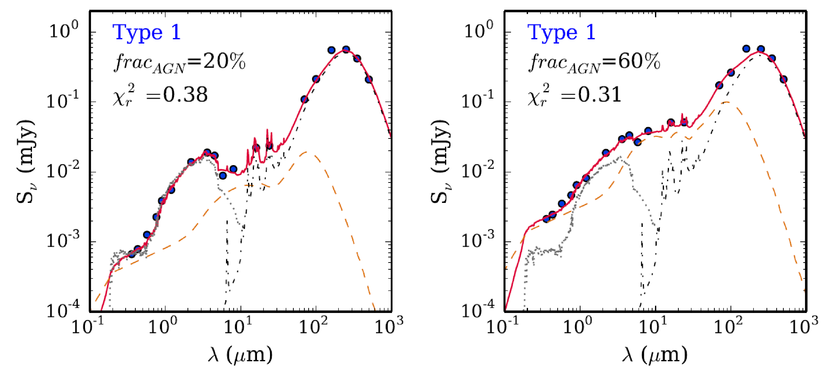|
Template fits to the multiwavelength (UV to far-IR)
Spectral Energy Distribution (SED) of galaxies is
a powerful approach to study the physical mechanism
dominating the integrated emission of extragalactic sources, e.g. stars vs AGN,
and to infer physical parameters for the stellar
population (e.g. mass, star-formation history) or the
AGN (e.g. integrated accretion luminosity).
CIGALE is a fast
state-of-the-art Bayesian galaxy SED fitting code that
reconstructs SEDs by using a stellar population library,
a star-formation history parametric model and the energy
balance principle, i.e., the energy absorbed by dust
in UV-optical is reemitted in the IR.
We have contributed to the inclusion of AGN templates
in the CIGALE to
be able to infer properties such as stellar mass an
star-formation rate of the underlying host galaxy for
large samples of
AGN detected in current multiwavelength surveys. The
performance of the code has been tested on mock data and
the results are presented
in Ciesla
et al. (2015). Work is in progress to apply this
code to real AGN detected in X-ray survey observations.
|
